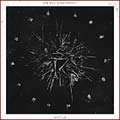#
# XML_node.objet
#
# This object is an XML node representation
#
# /- name (string)
# xml_node --- attributes (array)
# \- children (array) or value (string)
class xml_node {
var $name;
var $attributes = array();
var $children = array();
var $value = "";
function xml_node($name,$attributes,$children=array(),$value="") {
$this->name = $name;
if (is_array($attributes)) {
$this->attributes = $attributes;
}
$this->children = $children;
$this->value = $value;
}
}
#
# xml_tree class
#
# This object parses an XML stream and offers a tree composed by xml_nodes
#
class xml_tree {
var $xml_stream;
var $current_node;
var $root_node;
var $index;
var $value;
function xml_tree() {
$this->root_node = new xml_node("__ROOT_NODE",array());
$this->current_node = $this->root_node;
}
function add_tree($xml_stream) {
# Managing the parser
$this->xml_stream = $xml_stream;
$xml_parser = xml_parser_create();
xml_parser_set_option($xml_parser,XML_OPTION_CASE_FOLDING,0);
xml_parser_set_option($xml_parser,XML_OPTION_SKIP_WHITE,1);
if (!xml_parse_into_struct($xml_parser,$this->xml_stream,$this->value,$this->index)) {
xml_parser_free($xml_parser);
die("XML Parse error");
}
xml_parser_free($xml_parser);
# Now, $this->value and $this->index are informed, we can use the get_node methode.
$tab_result = $this->get_node(0,count($this->value) - 1);
$this->root_node->children[] = $tab_result[0];
$this->current_node = $this->root_node;
}
function get_node($index_start,$index_stop) {
#echo "
\n";
#echo "GET-NODE($index_start,$index_stop)
\n";
# What we are going to return is an array of xml_nodes
$return_tab = array();
# depth is only here to check if everything is all right
$tab_node = $this->value[$index_start];
$depth = $tab_node["level"]-1;
# Now we have to be sure we do not forget a single node
for ($index = $index_start;$index <= $index_stop;$index++) {
#echo "\$index = $index
";
# get the current node
$tab_node = $this->value[$index];
# what type of node is it ?
switch($tab_node["type"]) {
case "complete" :
# Depth integrity check
if ($tab_node["level"] != $depth+1) {
die("ERREUR # contrainte d'intégrité au noeud complet $index, niveau $depth + 1 au lieu de ".$tab_node["level"]);
}
#echo "Noeud complet trouvé position $index TAG ".$tab_node["tag"]."
\n";
# Easy one, no children to manage, only a value...
$return_tab[] = new xml_node($tab_node["tag"],$tab_node["attributes"],"",$tab_node["value"]);
break;
case "open" :
# Depth integrity check
if ($tab_node["level"] != $depth +1 ) {
die("ERREUR # contrainte d'intégrité au noeud ouvert $index, niveau $depth au lieu de ".$tab_node["level"]);
}
# Open tag, we re-use this methode to return its children
# Where is the correspondong close tag ?
$node_index = $this->index[$tab_node["tag"]];
$flipped_node_index = array_flip($node_index);
#echo "This ".$tab_node["tag"]." is at coords ".$flipped_node_index[$index]."
";
$i=1;
do {
$next_index = $node_index[$flipped_node_index[$index] + $i++];
$next_tag=$this->value[$next_index];
}
while ($next_tag["level"]!=$tab_node["level"]);
#echo "Ouverture de noeud détectée pos $index TAG ".$tab_node["tag"]."
\n Parcours jusqu au $next_index
\n";
# good, we can now instanciate our node
$return_tab[] = new xml_node($tab_node["tag"],$tab_node["attributes"],$this->get_node($index+1,$next_index),"");
# As we called the get_node methode, we are sure that nodes have been parsed to the corresponding close tag
$index = $next_index;
break;
case "close" :
# Depth integrity check
if ($tab_node["level"] != $depth ){
die("ERREUR # contrainte d'intégrité au noeud fermé $index, niveau $depth au lieu de ".$tab_node["level"]);
}
#echo "Fermeture de noeud detectée pos $index TAG ".$tab_node["tag"]."
\n";
# This ugly thing is useless because reaching a close tag means that $index==$index_stop but who knows ? =)
# it will be skipped soon
$index = $index_stop;
break;
default:
die("Erreur de type de TAG non déterminé :'".$tab_node["type"]."'");
}
}
# We are out ... returns the array with collected children...
return ($return_tab);
}
# this function browse the xml tree and set the current node to the selected node
function give_node($path) {
if ($path[0]=="/") {
$current_node=$this->root_node;
$path=substr($path,1);
#echo "ABSOLUTE PATH GIVEN=$path
";
}
else {
$current_node = $this->current_node;
}
#echo "PATH GIVEN=$path
";
$tab_path = split("/",$path);
foreach ($tab_path as $node_expr) {
#echo "STUDYING EXPR='$node_expr'
";
$node = $current_node;
$expr_tab = split("\?",$node_expr);
$node_name = $expr_tab[0];
$attr_tab = 0;
if (count($expr_tab)>1) {
##echo "TROUVE AU MOINS UNE CONDITION SUR LES ATTRIBUTS...
";
$attr_expr_tab=split(",",$expr_tab[1]);
$attr_tab=array();
foreach($attr_expr_tab as $attr_expr) {
$attr_split_expr=split("=",$attr_expr);
$attr_tab[$attr_split_expr[0]]=$attr_split_expr[1];
}
}
$last=0;
foreach ($node->children as $children) {
#echo "COMPARING WITH '$children->name'
";
if ($children->name == $node_name) {
##echo "TROUVE NOEUD CORRESPONDANT $node_name
";
if (is_array($attr_tab)) {
$node_attributes = $children->attributes;
foreach ($attr_tab as $key=>$value) {
if ($node_attributes[$key] == $value) {
#echo "ATTRIBUTE & CHANGE CURRENT NODE TO ".$children->name."
";
$current_node = $children;
$last = 1;
}
}
}
else {
##echo "CHILD=".$children->name."
";
#echo "CHANGE CURRENT NODE TO ".$children->name."
";
$current_node = $children;
$last=1;
}
}
if ($last) {
break;
}
}
if (!$last) {
#echo "PATH ERROR $node_name
";
#die("MMmmmh It seems that this file is not a DIA XML format...sorry...");
return 0;
}
}
return $current_node;
}
function browse_tree($path) {
$node = $this->give_node($path);
if (is_object($node)) {
$this->current_node = $node;
return 1;
}
return 0;
}
# this method dumps an html representation of the xml tree
function xml_show($node = "",$level=0,$last=0) {
if ($node=="") {
$node=$this->root_node;
}
if (!is_object($node)) {
die("ERROR : node is not an object");
}
$line="";
for($i=1;$i<=$level;$i++) {
if ((i==$level-1) and ($last)) {
$line.=" ";
}
else {
$line.=" |";
}
if ($i==$level) {
$line.="`-";
}
}
$line.=$node->name;
#echo $line;
$line.="".count($node->children)."";
if (count($node->children)==1) {
$line.=" (".$node->value.")
\n";
echo "$line";
}
else {
$line.="
\n";
echo "$line";
$i=1;
foreach($node->children as $children) {
if ($i==count($node->children)) {
$this->xml_show($children,$level+1,1);
}
else {
$this->xml_show($children,$level+1);
}
$i++;
}
}
}
#END_CLASS
}
STAGNANT WATERS (FRA/no) - Stagnant Waters (2012)

Label : Adversum
Sortie du Scud : 29 octobre 2012
Pays : France / Norvège
Genre : Metal Industriel Experimental
Type : Album
Playtime : 8 Titres - 46 Mins
Bien que STAGNANT WATERS ne doit pas vous dire grand-chose, je pense que PRYAPISME vous parlera un peu plus. En effet, STAGNANT WATERS compte dans ses rangs un des membres de ce groupe, qui s'est fait connaître récemment avec l'album Hyperblast Super Collider (qui est une tuerie au passage). Bref, passons au vif du sujet.
On peut séparer l'album en trois parties. La première est composée des deux premiers morceaux ("Algae" et "ССАЕР ЦНАПЯЛ ПНОИ ТАТ"), qui nous envoient des mélodies complètements déstructurées. C'est facile de se perdre sur ces deux premiers titres, les riffs sont agressifs et confus, leur enchaînement est imprévisible. Nous sommes face à un véritable chaos musical.
La deuxième partie, qui comporte les trois pistes suivantes, fait office de transition entre l'introduction et la conclusion. "Of Salt And Water" a une structure plus standard, malgré certains écarts qui seront facilement pardonnés vu l'élan "WTFesque" des deux précédents titres. "Castles" est intéressant, le morceau se compose de 4 parties bien distinctes. C'est la piste centrale de l'album et sa structure en fait un morceau pivot entre les différentes parties. Une première instrumentale à la limite du Death mélodique, une deuxième plutôt Brutal Death technique, une troisième plus orientée Black Metal et enfin, la conclusion du morceau qui nous livre une mélodie au piano sombre et glauque.
"Concrete" est le morceau le plus court de l'album, et aussi le plus incohérent. On a l'impression que les instruments ont décidé de jouer chacun un truc différent dans leur coin. C'est peut-être le titre le plus difficile à écouter et malgré sa courte durée, il reste très inaccessible, clôturant la deuxième partie de transition.
La dernière partie qui clôture l'album est faite de morceaux bien plus lourd et plus ambiancés que les précédents. C'est assez évident sur "Bandaged In Suicide Notes" (qui me fait affreusement penser à "Suicide Tutorials" de BLACKLODGE) pour le côté lourd et sur "Axolotl" pour le côté ambiancé. Ces deux pistes comprenant d'ailleurs quelques éléments de "chiptune" (communément appelé du 8-bits) qui s'intègrent parfaitement bien au tout.
La piste finale de ce Stagnant Waters, "From The Breaking Neck To Infinity", est très industrielle et remplie de contretemps Malgré tout, on sent que ceux-ci sont parfaitement à leur place et qu'ils sont voulus. Le titre s'achève sur une ambiance bien dérangeante qui pose la pierre finale de l'album.
Globalement, l'écoute de STAGNANT WATERS donne un sentiment de confusion, voire même de folie sur les premières et dernières pistes, sentiments renforcés par le côté imprévisible des titres et les contretemps quasi-systématique de "From The Breaking Neck To Infinity". J'ai eu beaucoup de mal à écouter l'album en entier. Non pas que ce soit mal fait, mais ce manque de cohérence m'a bloqué et je n'ai pas réussi à entrer dans l'ambiance que l'album tente d'établir. Malgré tout, ce fût une expérience intéressante, et certains titres comme "Algae" ou "Castles" sont des morceaux que je réécouterai avec plaisir.
Ajouté : Vendredi 28 Février 2014
Chroniqueur : Aarson
Score :   
Lien en relation: Stagnant Waters Website
Hits: 6444
|














